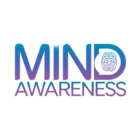How Is Poor Mental Health Treated in 2024?
Mental health treatment in 2024 combines multiple evidence-based approaches for thorough care. Traditional methods like psychotherapy and medication management work alongside modern digital solutions, including teletherapy and mental wellness apps. Healthcare providers now utilize targeted treatments based on genetic testing, while alternative therapies such as mindfulness and holistic practices complement conventional care. Insurance coverage has expanded to include more mental health services, and emerging technologies like VR therapy and AI-powered support tools improve treatment options. Community resources, professional networks, and workplace programs provide additional support systems. Understanding these various treatment options can help individuals make informed decisions about their mental healthcare journey.
Key Takeaways
-
Mental health treatment combines psychotherapy and medication management, with modern medications offering reduced side effects and better targeted treatments.
-
Digital therapy platforms provide remote access to licensed therapists through video counseling, text-based therapy, and mental wellness apps.
-
Holistic approaches integrate mindfulness, yoga, and natural supplements with traditional treatments for a comprehensive wellness strategy.
-
Insurance coverage for mental health services has improved, with more plans covering therapy, psychiatry, and prescription medications.
-
Technology innovations include VR therapy, AI-powered support, and mobile apps for mood tracking and guided therapeutic exercises.
Common Mental Health Treatment Methods
Several well-established treatment methods exist for addressing poor mental health, with the most common approaches including psychotherapy, medication, and lifestyle modifications. These evidence-based treatments can be used individually or in combination, depending on a person’s specific diagnosis and needs.
Psychotherapy, also known as talk therapy, involves regular sessions with licensed mental health professionals who help patients understand their thoughts and behaviors. Common types include Cognitive Behavioral Therapy (CBT), which focuses on changing negative thought patterns, and Dialectical Behavior Therapy (DBT), which helps manage emotions and relationships.
Medication management often involves antidepressants, anti-anxiety medications, or mood stabilizers prescribed by psychiatrists or primary care physicians. These medications work by balancing brain chemicals called neurotransmitters to improve symptoms and daily functioning.
Lifestyle modifications complement other treatments through regular exercise, proper sleep hygiene, and stress management techniques.
These changes include maintaining a consistent sleep schedule, engaging in 30 minutes of daily physical activity, practicing mindfulness or meditation, and following a balanced diet that supports mental wellness.
Digital Therapy and Virtual Care
Digital therapy and virtual care options have transformed mental health treatment accessibility in recent years. Through smartphones, tablets, and computers, patients can now connect with licensed therapists and mental health professionals from the comfort of their homes.
These services include video counseling sessions, text-based therapy, and mental wellness apps that offer guided meditation, mood tracking, and cognitive behavioral therapy exercises.
Popular telehealth platforms provide HIPAA-compliant video sessions that closely mirror traditional in-person therapy. Users can schedule appointments, message their therapists securely, and access therapeutic resources 24/7.
Many virtual platforms also offer specialized care for specific conditions like anxiety, depression, or PTSD.
Mental health apps complement professional treatment by providing tools for self-management. These include mood journals, breathing exercises, sleep tracking, and crisis helpline access.
Some apps use artificial intelligence to personalize recommendations and track progress over time.
Insurance companies increasingly cover digital mental health services, making them more affordable for many patients.
Research indicates that virtual therapy can be as effective as in-person treatment for many conditions, particularly when combined with traditional care methods.
Medication Advances and Management
Modern pharmaceutical developments have transformed the treatment of mental health conditions through more targeted medications and improved delivery methods.
New antidepressants, antipsychotics, and anti-anxiety medications now feature reduced side effects and more precise targeting of neurotransmitter systems. Long-acting injectable medications have also emerged, offering consistent treatment for patients who struggle with daily pill regimens.
Medication management has become more sophisticated through genetic testing that helps determine which medications will work best for individual patients. Healthcare providers can now use pharmacogenomic testing to analyze how a person’s genetic makeup might affect their response to specific psychiatric medications.
Digital pill tracking systems and smart medication containers help patients maintain their prescribed schedules while allowing doctors to monitor adherence remotely.
The integration of artificial intelligence in medication management has improved the prediction of drug interactions and potential side effects.
Treatment plans now commonly include combination therapies, where medications work in conjunction with specific dosing strategies. Regular monitoring through blood tests and symptom tracking helps healthcare providers make precise adjustments to medication types and dosages, optimizing treatment outcomes for each patient.
Alternative and Holistic Approaches
Alternative and holistic approaches have gained significant recognition in mental health treatment, complementing traditional medical interventions with evidence-based natural therapies. These methods focus on treating the whole person rather than just specific symptoms, incorporating mind-body practices into daily wellness routines.
Common holistic treatments include mindfulness meditation, yoga, acupuncture, and dietary modifications. Mindfulness practices help individuals manage stress and anxiety by teaching present-moment awareness, while yoga combines physical postures with breathing techniques to improve mental clarity.
Regular exercise, particularly outdoor activities, has shown remarkable benefits for depression and anxiety management.
Natural supplements like omega-3 fatty acids, St. John’s Wort, and SAM-e have demonstrated effectiveness for some individuals, though patients should consult healthcare providers before starting any supplement regimen.
Many practitioners also recommend lifestyle modifications such as improved sleep hygiene, reduced caffeine intake, and increased exposure to natural light.
Art therapy, music therapy, and aromatherapy serve as additional tools that can support emotional regulation and stress reduction when integrated into a thorough treatment plan.
Mental Health Support Systems
Strong support systems play a vital role in mental health recovery and maintenance, encompassing both professional networks and personal relationships.
These systems typically include mental health professionals, support groups, family members, friends, and community resources working together to provide thorough care.
Professional support networks often consist of psychiatrists, psychologists, counselors, and social workers who coordinate treatment plans. These practitioners communicate with each other to guarantee consistent care delivery and monitor patient progress.
Community-based organizations, such as mental health centers and advocacy groups, provide additional resources including crisis hotlines, peer support programs, and educational workshops.
Personal support systems are similarly important, involving family members and friends who offer emotional backing and practical assistance.
These individuals often help with daily tasks, medication reminders, and appointment scheduling while providing a stable environment for recovery.
Workplace support systems, including employee assistance programs and accommodating supervisors, can help maintain professional stability during treatment.
Additionally, online support communities and mental health apps create accessible platforms for individuals to connect with others facing similar challenges, share experiences, and access resources 24/7.
Insurance Coverage and Accessibility
Insurance coverage for mental health services has evolved greatly since the Mental Health Parity Act, though accessibility barriers continue to challenge many individuals seeking treatment.
Most insurance plans now cover mental health services in a manner akin to physical health care, including therapy sessions, psychiatric appointments, and necessary medications.
Coverage typically extends to both in-network and out-of-network providers, though copayments and deductibles vary considerably between plans. Many insurance companies require prior authorization for certain treatments, and patients should verify coverage details before beginning treatment.
Online portals and insurance representatives can help explain specific benefits and locate in-network providers.
For those without insurance, several options exist to access mental health care.
Community health centers often operate on sliding fee scales based on income. Telehealth platforms have expanded access to care while reducing costs, and many offer subscription-based payment models.
Additionally, teaching hospitals and training clinics frequently provide reduced-cost services, while employee assistance programs through workplaces may offer free initial counseling sessions.
State and federal programs can help qualifying individuals obtain coverage or connect with low-cost treatment options.
Emerging Technologies in Treatment
Recent technological advancements have transformed mental health treatment, introducing innovative digital solutions and therapeutic tools. Virtual reality (VR) therapy now allows patients to confront phobias and anxiety triggers in controlled, safe environments, while artificial intelligence-powered chatbots provide 24/7 emotional support and coping strategies.
Smartphone apps have become essential tools in mental health management, offering features like mood tracking, guided meditation, and cognitive behavioral therapy exercises. These digital platforms collect valuable data about users’ emotional patterns, sleep quality, and daily activities, helping both patients and therapists make informed decisions about treatment plans.
Teletherapy platforms have changed access to mental healthcare, connecting patients with licensed professionals through secure video calls and messaging systems. Advanced wearable devices now monitor physiological indicators of stress and anxiety, alerting users when intervention might be needed.
Machine learning algorithms are increasingly being used to predict mental health crises and recommend personalized treatment approaches. Additionally, brain-computer interfaces and neurofeedback technologies are emerging as promising tools for treating various mental health conditions, though these remain in experimental stages.
Global Mental Healthcare Trends
Mental health treatment approaches vary greatly across different regions of the world, with developed nations typically offering more extensive care options compared to developing countries. In Western nations, there’s a growing emphasis on integrated care systems that combine traditional therapy with digital health solutions, while many Asian countries are incorporating mindfulness-based treatments alongside modern psychiatric care.
Recent global trends show an increasing adoption of teletherapy services, particularly after the COVID-19 pandemic, which has helped bridge access gaps in remote areas. Many countries are also shifting toward community-based mental health services, moving away from institutional care models.
In Europe, there’s a strong focus on preventive mental health programs, while countries like Australia lead in youth mental health initiatives. Low and middle-income nations are gradually expanding their mental health infrastructure, often through partnerships with international organizations.
The World Health Organization’s Mental Health Action Plan has encouraged countries to strengthen their mental health policies, leading to improved access to basic psychiatric care in previously underserved regions. Cultural adaptations of evidence-based treatments are becoming more common, ensuring locally relevant care delivery.

